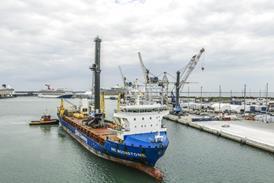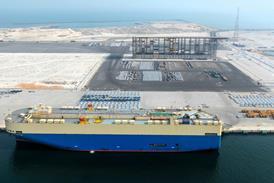The European road freight rate benchmark – produced by Transport Intelligence, Upply and the International Road Transport Union (IRU) – shows a 14.8 point drop in spot rates in the fourth quarter of 2023 compared to the same period the year prior.

Quarter-over-quarter, the spot index fell 4.5 points to 123.8 points. Contract rates, meanwhile, held firm with a quarter-over-quarter increase 1.7 points to 129.4. The year-on-year fall was just 0.9 points.
“Weak and falling demand for road freight across Europe has pulled down spot rates, while contract rates remained elevated due to cost pressure. The spot index now sits 5.5 points below the contract index, meaning that spot rates are now closer to their base level than contract rates. A combination of spot falls driven by declining industrial demand, in addition to contract rises caused by new emission tolls and general cost growth, resulted in contract prices climbing above spot rates from German cities to Paris, Birmingham, Milan, Lille, Madrid, Rotterdam, and Antwerp,” the report explained.”
Costs have increased across the board over the previous three years. Labour (up 28.2 percent), maintenance and repair (20.4 percent), tyres (21.6 percent), spare parts (13.5 percent), and insurance (8.7 percent) have all increased considerably and contributed to a particularly bloated cost base. This is the result of inflation passing through the system, adding upward pressure to rates and preventing rate falls.
Meanwhile, Germany’s new emission-based tolls came into effect on December 1, 2023, effectively increasing tolls for heavy-goods vehicles on German roads by around 80 percent. According to GVN, the Lower Saxony Carrier Association, this increase will result in an additional EUR300,000 (USD321,850) monthly expense for some of its members. This is measurable in Germany’s domestic road freight rate index, which showed that rates were up by 8.3 points in December. The IRU estimates that the additional cost of tolls will be EUR6,700 (USD7,190) per truck per year.
Low demand is likely to keep freight rates subdued in 2024, the report added. However, the new tolls being introduced on top of the high cost base will keep upward pressure on rates in the first half of the year. This is likely to sustain contract rates and limit further falls in spot rate growth.
















